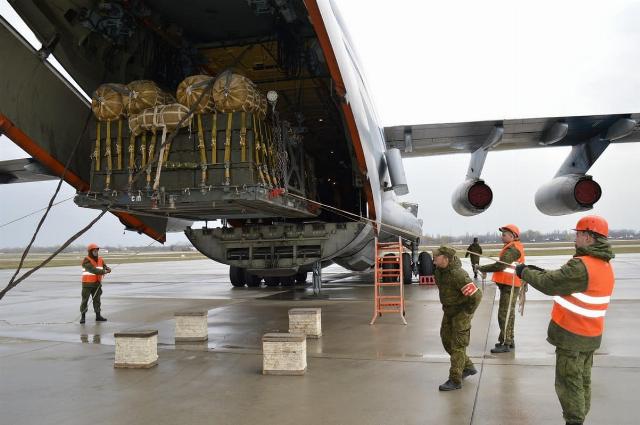Continuing the topic, I must say that the Gaza Strip ( see part I ) This is not the first time that cargo parachute systems, including guided gliding cargo parachute systems (USPS), have been used to deliver cargo during various armed conflicts in the Middle East. So, back in 2016, as part of the world food delivery program conducted under the auspices of the United Nations, a parachute landing of goods to Syrian refugees was carried out near the city of Deir ez-Zor. During the first landing, about 21 tons of cargo were dropped from leased Russian Il-76 aircraft.
According to the Central Command of the US Air Force, about 2,109.3 tons of humanitarian and supply cargo (the latter for their forces and US-supported armed groups) were parachuted by US military transport aircraft in the period from August 2014 to November 2021 in Iraq and Syria.
However, during this and subsequent parachute landings of cargo, what was well known to the Americans before was once again confirmed: the accuracy of landing cargo, which was dropped from a height of 6000-7000 m, to put it mildly, leaves much to be desired. The cargoes were scattered over a large area, some of them were not found at all. There have been cases of failure of parachute systems. Then it was decided to use disposable USPS ( read more about cargo systems here ).

The selection of cargo dropped by the United States in Syria
The United States also dropped weapons and ammunition to allied armed formations on these USGS. But even here there were cases when, as a result of a malfunction in the control system or errors in calculating the drop point, loads of ammunition fell into the hands of ISIS formations (a terrorist organization banned in the Russian Federation), which they immediately reported by posting photos and videos on social networks. Although some foreign experts believe that the mistakes could have been intentional.
Russia did not stand aside either. The private Russian company Advanced Technologies and Service LLC, which has been specializing in the delivery of various goods to hard-to-reach areas for over 30 years, including by parachute landing, delivered approximately 6,000 tons of humanitarian goods in this way in the Syrian Arab Republic from February 2016 to August 2017. Both Russian (including self-developed) and foreign (in this case Canadian) cargo parachute systems were used for parachuting. The drop was carried out from a height of 5000 m. At the same time, according to information on the official website of the company, the safety of goods when using Russian systems was about 98%, and Canadian systems – 50%.
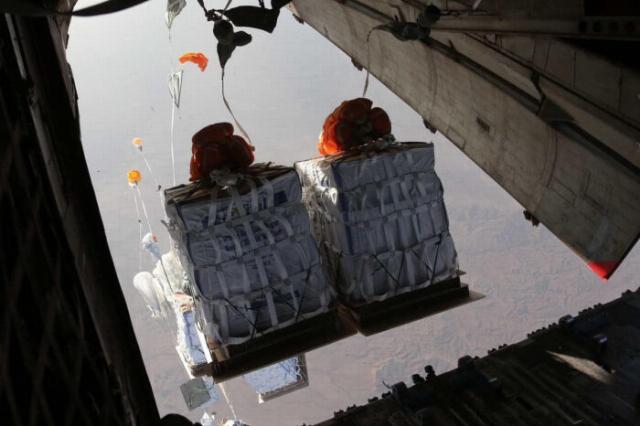
The Russian company Advanced Technologies and Service performs parachuting of cargo on the PGS-100 in Syria
In addition, Russian military personnel dropped over 400 parachute platforms with cargo in the SAR in 2016-2017 alone. P-7 parachute platforms with multi-dome parachute systems MKS-5-128R from the presence of the Armed Forces of the Russian Federation were used for cargo landing. Russian servicemen from the cargo preparation group for parachuting performed technical inspection of parachute systems and their stowage, cargo preparation for landing on parachute platforms, their loading into airplanes and cargo escort to the drop point in order to visually monitor the progress of cargo landing.
The landing was carried out from Il-76MD transport aircraft of the SAR Armed Forces. Cargo was dropped from a height of more than 4000 m (according to the technical and economic characteristics for the P-7 platform - 500-1500 m) in order to make it difficult to use enemy air defense systems. As a result, as well as due to the large demolition of the landing object from the point of ejection, landing sites of increased size were selected. At the same time, the mass of the payload placed on the platform reached, in some cases, up to 6000 kg, which exceeds the TEC for these landing facilities (the own weight of the P-7 platform, the multi-dome ISS-5-128R and cargo mooring facilities is about 2000 kg).
Preparation of the P-7 platform from ISS-5-128R for cargo landing in Syria
Thus, the parachuting of cargo in the Gaza Strip , as well as previously conducted in other regions of the Middle East, has once again confirmed the effectiveness of this method of rapid delivery of necessary goods to areas that cannot be accessed by other means of transport for a number of reasons. At the same time, the availability of various types of cargo parachute systems, including guided ones, allows their use to vary depending on the prevailing situation. And disposable PGS reduce the cost of this method of cargo delivery.
Cargo landing at the USGS in Russia
And how is the situation with the USPGS in Russia?
Everything is far from simple here. Although it started out very well. Back in April 1988, during the EXPARK expedition to the North Pole, the UPGS-500 radio-controlled parachute-cargo system was first tested, developed by a group of engineers at the AU Research Institute (automatic devices, currently JSC "Research Institute of Parachuting"). It consisted of a parachute system created on the basis of a highly maneuverable sports double-dome wing, two control units – command and executive, and a cargo platform from the serial PGS-500 series.2. The UPGS allowed landing loads weighing 200-500 kg with an accuracy of 50 m with an acceptable wind at the ground up to 15 m/s. The scheme of operation of the UPGS in the air is cascaded: stabilization takes 3-6 seconds or up to a set height (according to the PPK-Ugr device), then the main dome is activated (without the use of pyrotechnic means). At the same time, the executive control unit is activated.

Guided cargo parachute system UPGS-500
The control of the UPGS was supposed to be carried out by radio commands from the operator's console, located on the ground or descending on his parachute next to the UPGS, as well as using a radio beacon installed on the landing site or placed on a parachutist. The controls could be combined.
The instrument container with an executive unit was intended for receiving radio commands and working with control lines. Electromechanical tracking drives were used with winding and unwinding of the left and right control lines in proportion to the corresponding command. The command unit of the control system was designed to transmit radio signals by which the executive unit directs the parachute to the target. It could operate at the operator's choice in manual or automatic mode (radio beacon).
Then, in 1988, two specially trained UPGS operators, along with other EXPARK parachutists, jumped onto an ice floe next to the drifting research station SP-28 from an Il-76 aircraft and, after icing, prepared control panels for cargo guidance. After dropping two UPGS, they guided the cargo parachute systems, which housed barrels of TC-1 fuel, directly to the helipad, which allowed them to start refueling the Mi-8 helicopter without additional transportation.
And then the collapse of the USSR occurred, these works became unnecessary and their financing stopped. But not completely, as they say, "the fire went out, but the smoke was still coming." And when potential customers cheered up (or started up, looking at what our so-called "partners" had come to), the car spun again. And in exact accordance with the Marxist-Leninist philosophy: at a new stage in the development of scientific and technological progress.
Currently, as part of the Horizontal-4000 development work, a controlled gliding parachute system is being developed for high-precision landing of special cargo with a flight weight of up to 4000 kg. The start of work (according to the concluded state contract) is 2017. The contractor of the ROC is JSC MKPK Universal, Moscow. According to the information available to the author, the work has not yet been completed.
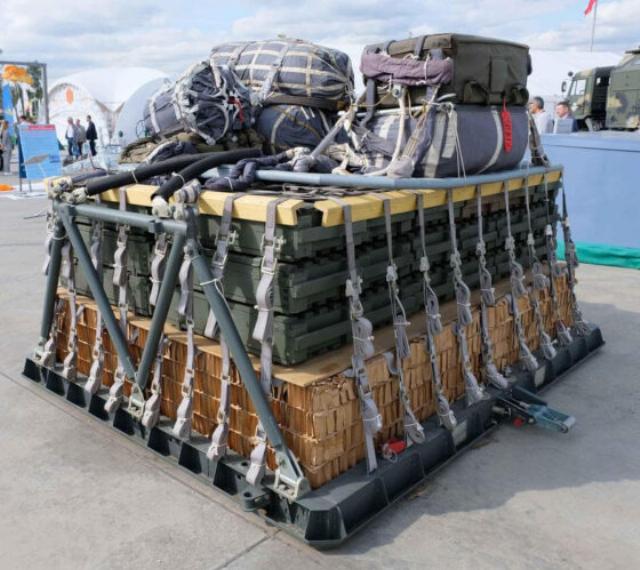
UPGS-4000 (OCD "Horizontal-4000")
The work of the UPGS-4000 in the air takes place in several stages. This scheme of work of the UPGS is clearly borrowed from the Americans. As, however, a lot of things in our parachuting industry. It was according to this scheme that Onyx USGS (developed by Atair Aerospace) and Screamer-2K/10K (developed by Strong Enterprise) worked, which were developed under the JPADS (J ointPrecisionAirdropSystems) program in the 2000s, but did not go into series.
American USPGS "Screamer-10K"
Since 2019, Polet Ivanovo Parachute Plant JSC has been developing an automated parachute cargo delivery system "Junker-DG-250", designed to deliver goods by air to a given landing point with a CVO of at least 100 m. The weight of the cargo is not more than 200 kg. The work continues.
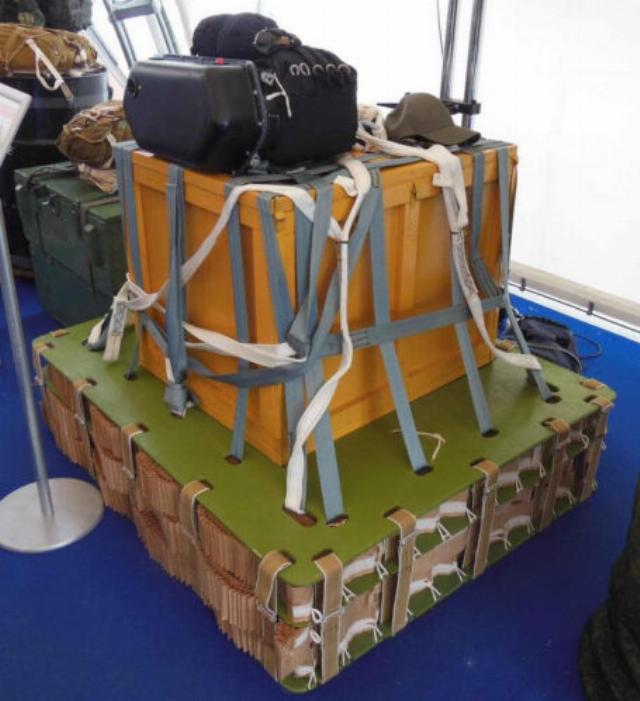
APSDG "Junker-DG-250"
At the International Military-Technical Forum "Army-2023", the Ivanovo enterprise demonstrated its new development – a "Robot parachute" for landing cargo weighing 100-140 kg with a CVO of at least 50 m.
Also, on an initiative basis, Ural Civil Aviation Plant JSC (Yekaterinburg) carried out the development of a controlled parachute system with a flight weight of 250, 500 and 1500 kg, ensuring the accuracy of landing cargo with a CVO of at least 150 m. As part of the tests of the experimental sample, 68 discharges were carried out in 2019-2020. The tests were carried out with the domes of the gliding parachutes "Arbalet-2", "Tandem-400", and Arbalet-3". A sample of the UPGS was demonstrated at the Army 2020 forum. However, in subsequent years, the UPGS was not demonstrated. Presumably, the work has been stopped (or suspended until the customer arrives).
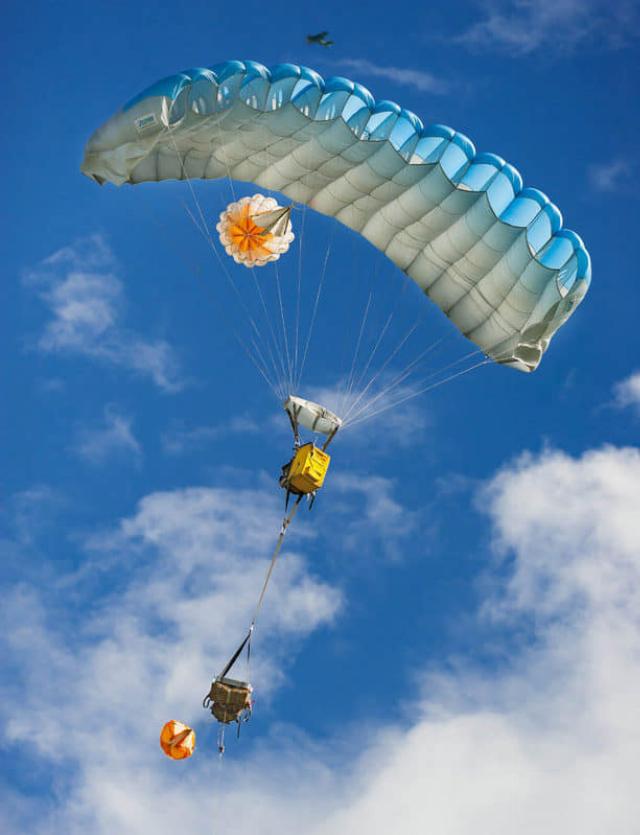
In 2022, again at the Army forum, Altair LLC (Kaluga) demonstrated a prototype of the Altair-400 unmanned aerial cargo delivery system, created using a wing-type gliding parachute and designed to deliver cargo weighing 100-400 kg (depending on the area of the main dome used) to a range of up to 24 km from max. the drop height is 10,000 m. According to representatives of Altair LLC, the complex is managed in the following modes:
- Autopilot – fully automatic control from the moment of separation from the aircraft to landing, CVO – 50 m;
- "guide" – the complex is dropped after a group or a single parachutist and completely copies the trajectory of the parachutist's descent (with a stable radio signal with a range of up to 1500 m) before landing, QUO – 20 m;
- manual operator control from the ground, CVO – 20 m;
- "mayak" – the complex carries out descent and landing with the help of a radio beacon operating at the landing site, CVO – 100 m.
Thus, both private and state-owned firms and organizations are engaged in the development of means of parachuting cargo and their precise delivery in Russia with varying degrees of success. The light at the end of the tunnel is visible. It remains only to wait for him to appear in full force.
The materials and photographs obtained (taken) by the author at the International Military-Technical Forum "Army", as well as the Internet resources of companies producing parachute equipment, were used.
